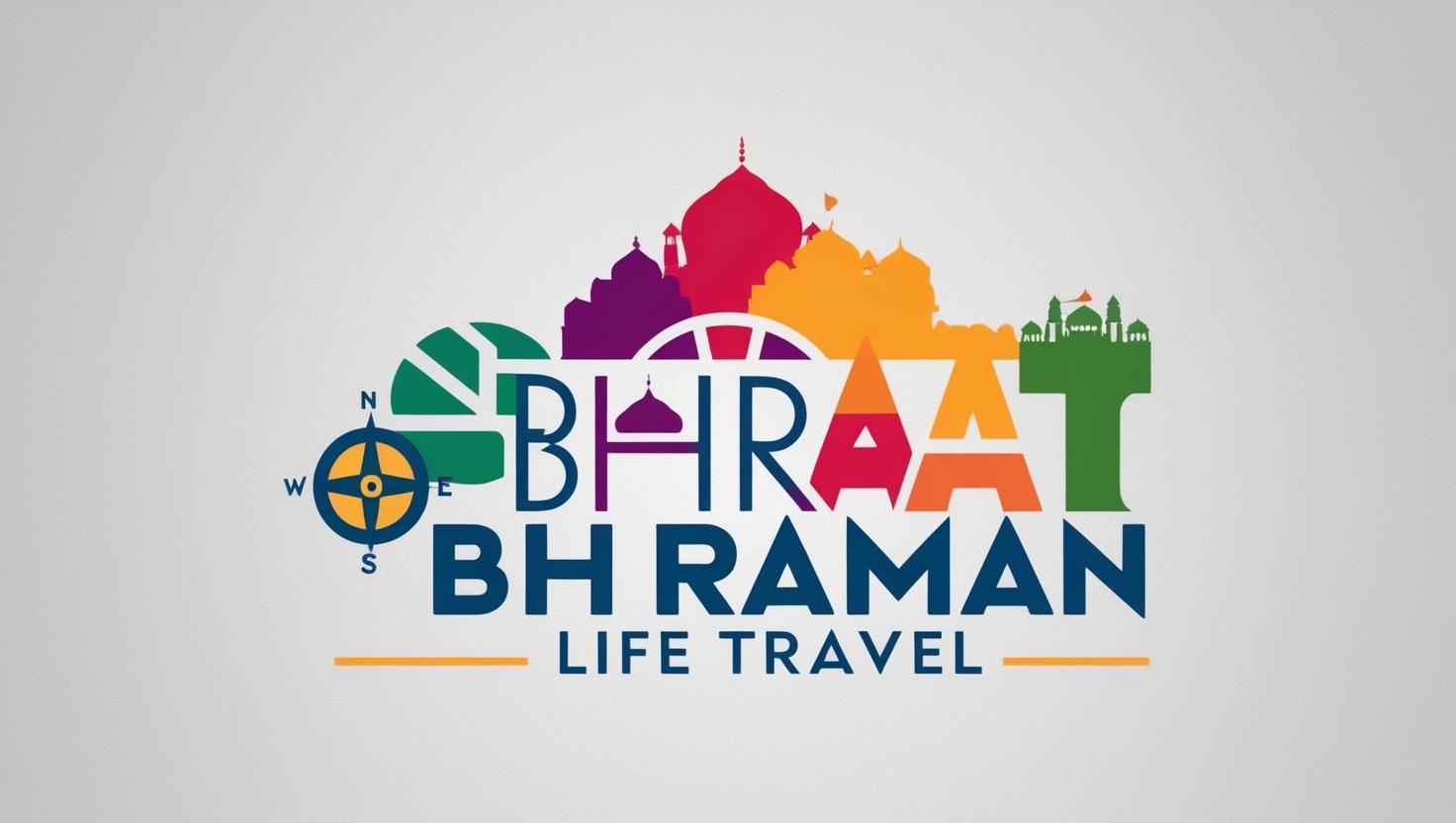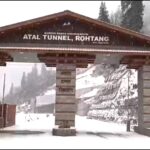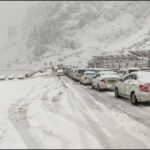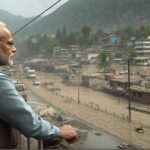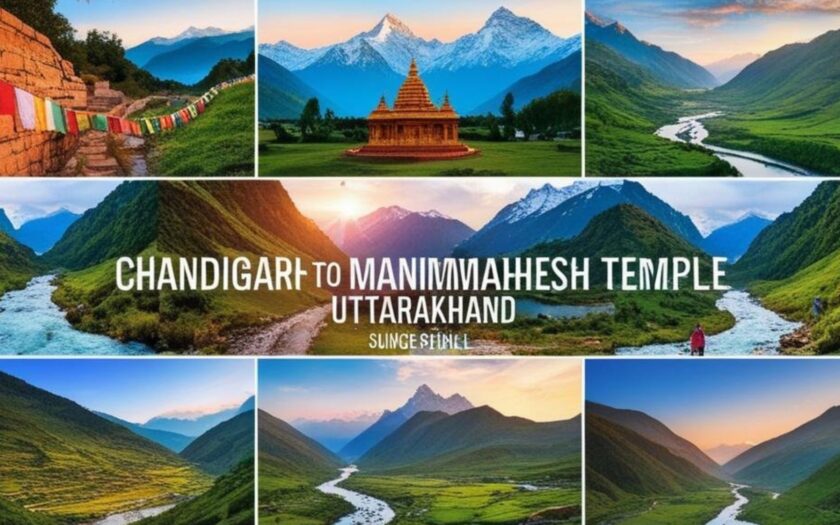Embarking on the Panch Kedar Yatra is a profound experience that transcends mere travel. This ultimate spiritual pilgrimage deep into the majestic Garhwal Himalayas of Uttarakhand, often revered as Devbhoomi (Land of Gods), connects devotees with five ancient and highly revered Shiva temples, collectively known as the Panch Kedar. These sacred shrines are steeped in mythology, believed to be the places where different parts of Lord Shiva’s body appeared after he eluded the Pandavas in the Mahabharata era. This divine trek offers not just spiritual solace but also breathtaking natural beauty, making the Panch Kedar Yatra an unforgettable journey of self-discovery.
This comprehensive guide aims to be your one-stop resource for planning and experiencing the Panch Kedar Yatra in 2025. We’ll delve into each temple, providing insights into their difficulty levels, typical itineraries, local culinary delights, accommodation options, and the essential travel and registration processes to ensure your Panch Kedar Yatra is seamless and fulfilling.
Understanding the Panch Kedar Yatra: A Divine Connection
The legend of the Panch Kedar Yatra traces back to the Pandavas, who, after the Kurukshetra war, sought Lord Shiva’s blessings to absolve their sins of fratricide. Shiva, however, wished to avoid them and disguised himself as a bull. When Bheema recognized him, Shiva disappeared into the ground, only to reappear in five different forms at five distinct locations, forming the Panch Kedar:
- Kedarnath: The hump of the bull.
- Madhyamaheshwar: The navel and stomach.
- Tungnath: The arms.
- Rudranath: The face.
- Kalpeshwar: The hair (jattas).
Each temple offers a unique spiritual and trekking experience, ranging from highly challenging to relatively easy, allowing pilgrims and trekkers of varying fitness levels to connect with the divine during their Panch Kedar Yatra.
1. Kedarnath: The Majestic Hump of Shiva for Your Panch Kedar Yatra
Difficulty: The Kedarnath trek is generally considered moderate to difficult. While immensely popular and equipped with various facilities, the 16 km uphill climb from Gaurikund demands good physical stamina and preparation. It’s a significant undertaking for any pilgrim on their Panch Kedar Yatra.
Rough Itinerary & Stays:
Most Kedarnath journeys begin from Rishikesh or Haridwar.
- Day 1: Haridwar/Rishikesh to Guptkashi/Sonprayag/Gaurikund (Drive)
- Drive approximately 6-8 hours.
- Stays: Options range from budget guesthouses to mid-range hotels in Guptkashi or Sonprayag. Gaurikund has more basic guesthouses. Staying as close to the Kedarnath trek starting point (Gaurikund) as possible is advisable for an early start.
- Day 2: Gaurikund to Kedarnath (Trek)
- Start early morning (around 4-5 AM) from Gaurikund.
- The 16 km Kedarnath trek typically takes 6-10 hours depending on individual pace and fitness.
- Stays: Basic guesthouses and dormitories are available at Kedarnath. Bookings are often managed on-site or through tour operators. Be prepared for shared accommodations.
- Day 3: Kedarnath to Gaurikund (Trek) & Drive to Guptkashi/Sonprayag
- Attend morning Aarti at Kedarnath temple.
- Descend to Gaurikund (4-7 hours).
- Drive back to your accommodation in Guptkashi or Sonprayag.
Local Foods:
Along the Kedarnath trek route, and in Sonprayag/Guptkashi, you’ll find simple yet hearty vegetarian meals. Common items include Aloo Puri, Maggi & Tea, Dal Chawal, Mandua ki Roti, Chainsoo, Jhangora ki Kheer, and Singori. These foods are designed to provide energy for the arduous journey.
Travel & Registration Process:
- Online Registration: For Kedarnath Yatra in 2025, online registration is mandatory for all pilgrims to manage crowd control and ensure safety. This is typically done via the Uttarakhand Char Dham Devasthanam Management Board portal or the Tourist Care Uttarakhand App. You’ll need valid ID proof, a passport-sized photograph, and contact details. You can find the official portal for registration at Uttarakhand Tourism Development Board.
- Physical Registration: If online registration isn’t feasible, on-spot counters might be available at major entry points like Rishikesh or Sonprayag/Gaurikund, but pre-registration is highly recommended to avoid queues and potential delays.
- Travel: Jolly Grant Airport (Dehradun) is the nearest airport. Rishikesh and Haridwar are the nearest major railway stations. Buses and taxis are readily available from Haridwar/Rishikesh to Sonprayag/Gaurikund, serving as key points for the Kedarnath trip.
- Accessibility Options: For those who find the Kedarnath trek too challenging, Kedarnath facilities include pony/mule services, Doli (palanquin) services, and helicopter services (from Guptkashi, Phata, Sersi, Sitapur). Book these well in advance, especially during peak season, to secure your spot.
2. Tungnath: The Highest Shiva Temple and Easiest Kedar for Your Panch Kedar Yatra
Difficulty: The Tungnath trek is widely considered Easy to Moderate, making it the most accessible among the Panch Kedar. Its well-maintained and relatively short trail from Chopta allows beginners, families, and even seniors with reasonable fitness to undertake it as part of their Panch Kedar Yatra.
Rough Itinerary & Stays:
Most journeys to Tungnath start from Haridwar or Rishikesh, with Chopta being the primary base.
- Day 1: Haridwar/Rishikesh to Chopta (Drive)
- Drive approximately 7-9 hours.
- Stays: Chopta offers various options from basic guesthouses, fixed camps, and a few budget hotels. It’s often called the “Mini Switzerland of India” for its scenic meadows.
- Day 2: Chopta to Tungnath & Chandrashila (Trek) and back to Chopta
- Start early from Chopta (approx. 3.5-4 km one-way to Tungnath).
- Trek to Tungnath (2-3 hours). Spend time at the temple.
- Continue to Chandrashila Peak (1.5 km further, 1-2 hours) for panoramic Himalayan views.
- Descend back to Chopta (3-5 hours).
- Stays: Overnight in Chopta or nearby villages like Duggalbitta/Kund. Basic dhabas are available near Tungnath temple for food.
Local Foods:
Chopta and the Tungnath route offer typical Garhwali cuisine. Expect hearty meals like Rajma Chawal, Aloo Ke Gutke, Kumaoni Raita, Gahat ki Dal, and the ubiquitous Maggi and tea.
Travel & Registration Process:
- Online/Physical Registration: Generally, no formal registration is required specifically for the Tungnath trek, unlike Kedarnath. However, carrying valid ID proof is always recommended for your Panch Kedar Yatra.
- Travel: Jolly Grant Airport (Dehradun) is the nearest airport. Rishikesh or Haridwar are the nearest railway stations. Buses and shared taxis are available from Rishikesh/Haridwar to Ukhimath, and then to Chopta. The road to Chopta is motorable.
3. Madhyamaheshwar: The Belly of Shiva on Your Panch Kedar Yatra
Difficulty: The Madhyamaheshwar trek is categorized as moderate to difficult. It’s a proper Himalayan trek, longer and more challenging than Tungnath but typically less arduous than Rudranath. It involves continuous uphill climbs and descents through dense forests and meadows, making it a significant part of the Panch Kedar Yatra.
Planning a trek to this significant Kedar?
- The primary keyword for those seeking this pilgrimage is “Madhyamaheshwar trek“. Your content should provide detailed, practical information for those committed to undertaking it.
- For pilgrims, “Madhyamaheshwar yatra” focuses on the spiritual journey to the temple.
- Many pre-trip searches involve “Madhyamaheshwar trek difficulty” as travelers assess the physical demands. Acknowledging and detailing the challenges is crucial.
- Those organizing their trip meticulously will often look for a “Madhyamaheshwar itinerary” to plan their days effectively.
Rough Itinerary & Stays:
The trek to Madhyamaheshwar typically starts from Ransi village, which is motorable from Ukhimath.
- Day 1: Haridwar/Rishikesh to Ransi (Drive)
- Drive approximately 8-10 hours.
- Stays: Basic guesthouses and homestays are available in Ransi. Staying here overnight is recommended to start the trek fresh.
- Day 2: Ransi to Gaundhar/Bantoli (Trek) & Stay
- Trek from Ransi to Gaundhar (approx. 6 km) or Bantoli (approx. 10 km).
- Stays: Basic dhabas and limited guesthouses are available at Gaundhar and Bantoli. Many prefer to camp.
- Day 3: Gaundhar/Bantoli to Madhyamaheshwar (Trek) & Stay
- The most challenging day. Trek from Gaundhar/Bantoli to Madhyamaheshwar (approx. 16 km from Ransi to temple).
- Stays: Very basic guesthouses/dharamshalas at the Madhyamaheshwar temple premises. Be prepared for rustic conditions or carry your own tents.
- Day 4: Madhyamaheshwar to Ransi (Descend) & Drive to Ukhimath
- Descend back to Ransi.
- Drive to Ukhimath, which offers better accommodation options.
- Day 5: Ukhimath to Haridwar/Rishikesh (Drive)
Local Foods:
Similar to other Kedar routes, expect simple, vegetarian Garhwali meals. Millet-based Rotis, Dal-Bhaat, local greens, and the addition of Ghee and Jaggery for added nutrition are common along the Madhyamaheshwar trek.
Travel & Registration Process:
- Online/Physical Registration: No specific mandatory registration is typically required for Madhyamaheshwar. Always carry valid ID for your Panch Kedar Yatra.
- Travel: Jolly Grant Airport (Dehradun) is the nearest airport. Rishikesh or Haridwar are the nearest railway stations. Buses and shared taxis from Rishikesh/Haridwar to Ukhimath. From Ukhimath, local jeeps or shared taxis can take you to Ransi, the trek starting point for the Madhyamaheshwar trek.
4. Rudranath: The Face of Shiva – The Toughest Panch Kedar Yatra Section
Difficulty: Rudranath is widely considered Difficult, often being the toughest and most remote among the Panch Kedar. The Rudranath trek involves long distances, steep ascents and descents, and traverses through dense forests and high-altitude meadows. It is not recommended for beginners without prior trekking experience and excellent physical fitness, truly testing the dedication of those on a Panch Kedar Yatra.
Rough Itinerary & Stays:
The trek to Rudranath typically begins from Sagar village near Gopeshwar.
- Day 1: Haridwar/Rishikesh to Sagar (Drive)
- Drive approximately 8-10 hours.
- Stays: Basic guesthouses/homestays in Sagar.
- Day 2: Sagar to Lyuti Bugyal/Panar Bugyal (Trek) & Stay
- Begin the Rudranath trek (approx. 10-12 km). This is a long and often steep ascent.
- Stays: Very basic huts or camping options at Lyuti Bugyal or Panar Bugyal. Carrying your own tents and sleeping bags is highly recommended for this remote trek.
- Day 3: Lyuti Bugyal/Panar Bugyal to Rudranath & back to Lyuti Bugyal (Trek)
- Trek to Rudranath temple (approx. 5-7 km one-way).
- Spend time at the temple, including the associated holy kunds (Narad Kund, Surya Kund).
- Descend back to Lyuti Bugyal/Panar Bugyal.
- Stays: Same as Day 2.
- Day 4: Lyuti Bugyal/Panar Bugyal to Sagar (Descend) & Drive to Pipalkoti/Joshimath
- Long descent back to Sagar.
- Drive to a larger town like Pipalkoti or Joshimath for better facilities.
- Day 5: Pipalkoti/Joshimath to Haridwar/Rishikesh (Drive)
Local Foods:
Due to its remote nature, food options on the Rudranath trek are extremely basic. Simple rice, dal, and local vegetable curries are the norm at dhabas. Carrying energy bars, dry fruits, and nuts as supplements is crucial.
Travel & Registration Process:
- Online/Physical Registration: While not as extensively formalized as Char Dham, some local Forest Department permits are likely required for the Rudranath trek, especially if entering certain forest areas. This is primarily for safety and tracking. Check with local authorities or reliable tour operators. Some sources indicate a forest department registration in Chauridhar or Sagar. Always carry valid ID proof for your Panch Kedar Yatra.
- Travel: Jolly Grant Airport (Dehradun) is the nearest airport. Rishikesh or Haridwar are the nearest railway stations. Buses and shared taxis from Rishikesh/Haridwar to Gopeshwar, and then local shared jeeps/taxis to Sagar village, the starting point for the challenging Rudranath trek.
5. Kalpeshwar: The Hair (Jatta) of Shiva – The Easiest & Year-Round Panch Kedar Yatra Destination
Difficulty: The Kalpeshwar trek is Very Easy. It’s essentially a short, gentle hike. This makes it the most accessible of the Panch Kedar and its biggest advantage for many pilgrims undertaking the Panch Kedar Yatra.
Rough Itinerary & Stays:
Kalpeshwar is located in the beautiful Urgam Valley. It can be done as a standalone trip or easily integrated into a longer Panch Kedar Yatra itinerary.
- Day 1: Haridwar/Rishikesh to Helang/Urgam Valley (Drive)
- Drive approximately 8-10 hours to Helang. From Helang, shared jeeps/taxis go to Urgam Village.
- Stays: Guesthouses and homestays are available in Urgam Village.
- Day 2: Urgam Valley to Kalpeshwar (Hike) & Explore
- From Urgam village, it’s a very short walk/hike (approx. 1-2 km) to the Kalpeshwar temple. The road is motorable almost till the temple.
- Spend time at the temple, explore the serene Urgam Valley, known for its apple orchards and potato farms.
- Stays: Overnight in Urgam Valley or return to Joshimath for better facilities.
Local Foods:
Urgam Valley, being a fertile region, offers fresh local produce around the Kalpeshwar trek route. Simple, home-cooked meals featuring seasonal vegetables, fresh paneer, and local fruits (depending on the season) are common. Standard dhaba fare like parathas, dal, and rice are also available.
Travel & Registration Process:
- Online/Physical Registration: No formal registration is typically required for Kalpeshwar due to its accessibility. Always carry a valid ID for your Panch Kedar Yatra.
- Travel: Jolly Grant Airport (Dehradun) is the nearest airport. Rishikesh or Haridwar are the nearest railway stations. Buses and shared taxis from Rishikesh/Haridwar to Joshimath, then local shared jeeps/taxis to Helang, and further to Urgam village. The road is accessible throughout the year, making Kalpeshwar temple the only Kedar to offer year-round access.
General Considerations for Your Panch Kedar Yatra
Beyond the individual temples, here are crucial aspects to consider for a smooth and memorable journey that makes your Panch Kedar trip truly special:
Best Time to Visit for Your Panch Kedar Yatra
The optimal time for the Panch Kedar Yatra is May to June and September to October.
- May-June: Pleasant weather, clear skies, and rhododendron blooms in many areas. Temples usually open in early May.
- September-October: Post-monsoon greenery, crisp air, and clear views of the Himalayan peaks. Temples close in late October or early November.
- Avoid Monsoon (July-August): Heavy rainfall can lead to landslides, making roads and trekking trails dangerous and unreliable, impacting all five routes, including the Kedarnath trek and Rudranath trek.
- Winter (November-April): Most temples are closed due to heavy snowfall, and the regions become inaccessible. Only Kalpeshwar remains open, which is why “Panch Kedar open all year” is a key aspect of this particular shrine for your Panch Kedar Yatra.
Accommodation Along the Route
- Government Guest Houses (GMVN/KMVN): These are reliable options, offering basic but clean rooms. Booking in advance is highly recommended, especially for popular spots like those near the Kedarnath trek and Tungnath trek.
- Private Guesthouses/Homestays: Available in most villages along the routes. These often provide a more authentic local experience and home-cooked meals, particularly appealing for the Madhyamaheshwar trek and Urgam Valley Kalpeshwar area during your Panch Kedar Yatra.
- Dharamshalas/Ashrams: Found near temples, offering very basic and economical lodging, often on a first-come, first-served basis.
- Tents/Camping: For more remote sections (especially for the demanding Rudranath trek and parts of the Madhyamaheshwar trek), carrying your own camping gear is advisable, or opting for organized treks that provide tents.
Local Foods and Dining Experience
The food throughout the Panch Kedar region is predominantly vegetarian and simple, reflecting the Garhwali culinary traditions. Expect:
- Dhabas: Small roadside eateries offering fresh, hot meals.
- Wholesome Staples: Dal (lentils), rice, seasonal vegetable curries, and rotis (Indian bread) are common.
- Local Grains: Mandua (finger millet) and Jhangora (barnyard millet) are often used for rotis and kheer, providing warmth and nutrition on a Himalayan trek.
- Simple Breakfasts: Aloo Puri, parathas, and Maggi are ubiquitous.
- Tea: Hot tea is a constant companion on chilly mornings and evenings, especially vital during any Panch Kedar trek.
- Hydration: Always carry sufficient water. Local springs are often potable but filter it if unsure.
Travel and Connectivity for Your Panch Kedar Yatra
- Base Camps: Haridwar and Rishikesh serve as the primary gateways to the Garhwal Himalayas for any Panch Kedar Yatra.
- Road Network: The region is well-connected by roads to major towns, though some stretches can be winding and prone to landslides during monsoon, impacting travel to all temples, especially those accessed by road for the Kedarnath trip or Rudranath trek.
- Public Transport: State transport buses and shared taxis (often jeeps like Boleros or Sumos) are the most common modes of transport between towns for your spiritual journey.
- Private Taxis: Can be hired for a more comfortable and flexible journey, but are more expensive.
- Mobile Connectivity: Expect limited to no mobile network in many remote sections of the treks, especially around Madhyamaheshwar and Rudranath. BSNL usually has the best coverage, but even that can be patchy. Inform your family/friends of your itinerary and expected communication blackouts.
Registration Process (General Guidelines) for the Panch Kedar Yatra
While the Char Dham Yatra (which includes Kedarnath) has had mandatory online registration in recent years, the Panch Kedar Yatra typically has a more relaxed, but evolving, registration system.
- Official Sources: Always refer to the official Uttarakhand Tourism Development Board (UTDB) website for the most up-to-date information on registration requirements for 2025. Rules can change based on pilgrim traffic and safety concerns. As of current information for 2025, online registration for Kedarnath Yatra is mandatory.
- Char Dham Registration (for Kedarnath): For Kedarnath Yatra, you must register online via the Uttarakhand Char Dham Devasthanam Management Board portal or their app. This usually requires:
- Valid ID proof (Aadhar Card, PAN Card, Voter ID, Passport).
- Passport-sized photograph.
- Contact details for next of kin.
- Remember, the Kedarnath Yatra registration is free of cost.
- Forest Department Permits: For some treks, particularly the Rudranath trek, you might need to obtain a permit from the local Forest Department office (e.g., at Sagar Village or Chauridhar). This is primarily for safety and tracking purposes and will be part of your overall Rudranath trek guide information.
- On-Spot Registration: Some locations might offer physical registration counters, but expect queues during peak season. Online registration, if available, is always more convenient.
- Tour Operators: If you book your Panch Kedar trip through a reputable tour operator, they will generally handle all necessary registrations and permits on your behalf.
- Medical Check-up: For high-altitude treks like the Kedarnath trek or Madhyamaheshwar trek, it’s highly advisable to undergo a medical check-up before your journey, especially if you have pre-existing health conditions. Mandatory health check-ups may also be required for certain categories of pilgrims for Kedarnath.
Trekking Essentials and Safety for Your Panch Kedar Yatra
- Physical Fitness: All Panch Kedar treks, except Kalpeshwar, require good physical fitness. Start a fitness regime (jogging, brisk walking, climbing stairs) a few weeks or months before your Himalayan trek. Even for a “low difficulty” Tungnath trek, basic fitness enhances the experience. For more detailed preparation tips, check out our Guide to High-Altitude Trekking Preparation.
- Layered Clothing: Weather in the Himalayas can change rapidly. Pack thermal wear, fleece jackets, and a waterproof/windproof outer shell suitable for a trekking in Himalayas experience.
- Trekking Gear: Sturdy, waterproof trekking shoes with good ankle support are crucial for any Panch Kedar trek. Carry trekking poles for stability, especially on the more challenging Rudranath trek. You can find reliable gear.
- First Aid Kit: A personal kit with essential medicines, pain relievers, band-aids, antiseptic, and any personal medications.
- Altitude Sickness (AMS): Be aware of AMS symptoms (headache, nausea, dizziness). Acclimatize properly, hydrate well, and ascend gradually. This is particularly important for higher altitude temples like Kedarnath, Tungnath, and Madhyamaheshwar.
- Essentials: Sunscreen, sunglasses, a hat, headlamp/torch, power bank, reusable water bottle, basic toiletries.
- Respect Local Culture: Dress modestly, especially in temple premises. Do not litter. Respect the local customs and traditions during your spiritual journey.
- Guides: For the more difficult treks like the Rudranath trek and Madhyamaheshwar trek, hiring a local guide is highly recommended for safety and navigation. Consider exploring other Spiritual Circuits in Uttarakhand (Internal link example) if you plan an extended stay.
Frequently Asked Questions (FAQs) about the Panch Kedar Yatra
Here are answers to some of the most common questions pilgrims and trekkers have about the Panch Kedar Yatra:
What is the cost of Panch Kedar?
The cost of a Panch Kedar Yatra can vary significantly depending on several factors:
- Duration: A full Panch Kedar Yatra typically ranges from 10 to 14 days.
- Mode of Transport: This includes travel from your home city to Haridwar/Rishikesh (train/flight) and then local transport (shared jeep, private taxi) within Uttarakhand.
- Accommodation: Basic guesthouses/dormitories will be cheaper than mid-range hotels. Camping charges might also apply for remote treks like Rudranath.
- Food: Meals are usually simple vegetarian fare.
- Accessibility Options: For Kedarnath, using helicopter services, ponies, or Dolis adds significantly to the cost.
- Guide/Porter Services: Essential for tougher treks, adding to the overall expense.
- Package vs. Individual Travel: Tour operators offer packages ranging from INR 40,000 to INR 80,000+ per person for a comprehensive Panch Kedar Yatra (Ex-Haridwar/Dehradun), covering accommodation, most meals, and transport. Individual travel can be slightly cheaper if you manage all bookings yourself, but requires more planning and flexibility.
How much will a Kedarnath trip cost?
A dedicated Kedarnath trip is generally shorter and thus less expensive than the full Panch Kedar Yatra.
- Budget (Basic): For a 3-4 day trip from Haridwar/Rishikesh, using public transport and basic guesthouses, you might spend INR 8,000 – 15,000 per person. This would include bus/shared taxi fare to Gaurikund, basic stay, and trek on foot.
- Mid-Range: Including private taxi, better guesthouses, and possibly pony/Doli services for the trek, the cost could be INR 15,000 – 30,000 per person.
- With Helicopter: If you opt for Kedarnath helicopter services (from Phata/Guptkashi/Sitapur), the helicopter fare alone can add INR 7,000 – 10,000+ per person (round trip) to your total cost, making the overall trip closer to INR 25,000 – 40,000+ per person, depending on other inclusions.
How many days will it take to cover Panch Kedar?
To cover all five Panch Kedar temples comprehensively, you generally need 10 to 14 days. This duration accounts for travel to and from the base camps (like Haridwar/Rishikesh), driving between different trek starting points, and dedicated trekking days for each temple, including acclimatization where necessary for your Panch Kedar Yatra.
- Kedarnath: 3-4 days (including travel to base)
- Tungnath (with Chandrashila): 2-3 days (including travel to base)
- Madhyamaheshwar: 4-5 days (including travel to base)
- Rudranath: 4-5 days (including travel to base)
- Kalpeshwar: 1-2 days (can be combined with travel to/from Joshimath) Attempting to complete the entire Panch Kedar Yatra in fewer days would mean extremely rushed travel and challenging back-to-back treks.
Is Panch Kedar trek difficult?
The overall Panch Kedar trek is considered moderately difficult to difficult, requiring a good level of physical fitness and mental preparedness for the Panch Kedar Yatra. However, the difficulty varies significantly for each temple:
- Kalpeshwar: Very Easy (short hike, accessible year-round)
- Tungnath: Easy to Moderate (shortest and most well-maintained trek)
- Kedarnath: Moderate to Difficult (long and continuous uphill climb, but with good facilities)
- Madhyamaheshwar: Moderate to Difficult (long trek through forests and meadows)
- Rudranath: Difficult (the toughest and most remote, involving challenging terrain and long distances) If you plan to complete all five in one go, expect a demanding journey. Proper training, suitable gear, and adequate acclimatization are essential for a safe and enjoyable Panch Kedar trip.
Which is the easiest Kedar to visit?
Kalpeshwar Temple is by far the easiest Kedar to visit as part of the Panch Kedar Yatra. The trek from Urgam village is very short (1-2 km) and gentle, making it accessible to pilgrims of all ages and fitness levels. It is also the only Panch Kedar temple that remains open throughout the year.
Can I do Panch Kedar solo?
While it is possible to do parts of the Panch Kedar Yatra solo, especially the more accessible ones like Kedarnath and Tungnath (with sufficient planning), for the tougher and more remote treks like Rudranath and Madhyamaheshwar, it is highly recommended to go with a local guide or as part of an organized group. The terrain can be challenging, routes less clear, and help can be far away in case of emergencies during your Panch Kedar Yatra.
What should I carry for Panch Kedar Yatra?
Key essentials for your Panch Kedar Yatra include:
- Clothing: Layered warm clothing (thermals, fleece, woolens), waterproof and windproof jacket, sturdy trekking pants.
- Footwear: Waterproof trekking shoes with good ankle support, extra socks.
- Gear: Backpack, trekking poles, headlamp/torch, power bank, sunglasses, sun hat.
- Health: Personal first-aid kit, prescribed medications, altitude sickness medication (consult doctor), high-energy snacks (dry fruits, energy bars).
- Documents: Valid ID proof, copies of registration documents, sufficient cash (ATMs are limited).
- Miscellaneous: Reusable water bottle, toiletries, rain cover for backpack.
The Panch Kedar Yatra is more than just a trip; it’s a journey into the heart of spiritual India and the raw beauty of the Himalayas. By understanding the unique aspects of each temple, preparing adequately, and respecting the sacred environment, you can ensure a truly enriching and unforgettable experience on this Divine Trek. May your pilgrimage be blessed!
